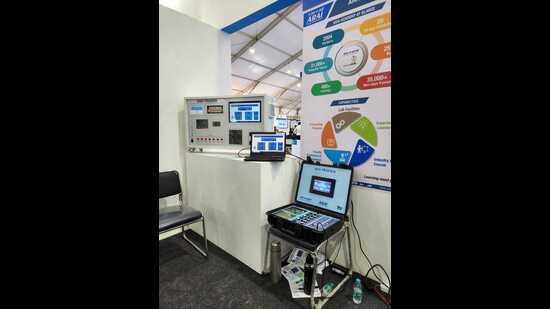The exposition is on till January 25, and features fast-charging systems for electric heavy commercial vehicles such as trucks and buses
In a bid to provide solutions for the futuristic needs of the automotive sector, the Automotive Research Association of India (ARAI) has developed some futuristic solutions that are being showcased at the ongoing Symposium on International Automotive Technology (SIAT) 2024 at the Pune International Exhibition and Convention Centre (PIECC) in Moshi. The exposition is on till January 25, and features fast-charging systems for electric heavy commercial vehicles such as trucks and buses, specially made battery management systems for skilling and training purposes, and the hydrogen pavilion among other highlights.

Sanjay Patil from ARAI said, “The world is looking at alternate fuels for the energy needs of vehicles, and electric vehicles are steadily gaining popularity. Batteries are among the most important parts of these e-vehicles and so is the battery management system. Considering the training needs of skilled manpower which will be required to cater to the development and service needs of electric vehicles, ARAI has introduced a specially designed Battery Management System Trainer (BMST) which is ideally suited for budding engineers and technocrats for understanding the overall functioning of the battery and its various parts.”
“This BMST will have special features such as monitoring individual cells, temperature, pack-level current, CAN communication data and real-time display. It can be applied in education and training, BMS development, student projects, and hands-on experience for industry professionals,” Patil said.
Abhijit Mulay, deputy director of ARAI, said, “While the use of electric vehicles is growing, an effective option for fast-charging of vehicles is of paramount importance. Going forward, heavy commercial vehicles such as trucks and buses will also be electric ones. Thus, to cater to the need to charge these big vehicles, ARAI is in the advanced stages of developing the Overhead Automated Charging Device (OHACD). These charges of about 600KW capacity would charge the vehicle from 0 to 80% in just 25 minutes. The time taken by the current 100KW charger to charge the passenger car is about three to four hours. The OHACD technology will be introduced to the market in the next one to one-and-a-half years.”
S S Thipse, senior deputy director of ARAI, said, “Hydrogen is a clean fuel, and is the fuel of the future. So, ARAI has showcased the latest technology in hydrogen vehicles through a specially dedicated pavilion at the SIAT 2024 exposition. The latest in hydrogen fuel technology is displayed at this pavilion including the H2 fuel cell bus, H2 IC engine, H2 type 4 cylinder, H2 fuel kit, and H2 ICE truck. ARAI is developing the testing and certification model for hydrogen-powered vehicles and their components. It is also in the advanced stages of developing a hydrogen-powered engine which will be BSVI-compliant.”
